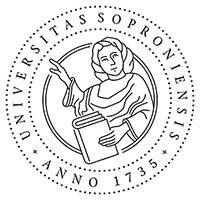Társadalmi egyenlőség vagy kulturális identitás?
A cigány/roma oktatáspolitika dilemmái
Resumen
Az európai együttműködés bonyolult rendszerében minden nép, népcsoport keresi a helyét, törekszik érvényesíteni érdekeit. A beilleszkedéssel még azoknak a népeknek is nehézségeik vannak, amelyek politikai egységet, államot alkotnak. Még bonyolultabb azoknak a helyzete, akiknek - például a baszkoknak — nincsen saját államuk. A cigányságot ebben az összefüggésben szemlélve, megérthetjük azokat a súlyos gondokat, amelyek az integrációval függenek össze. A cigány, roma népesség belülről, kulturálisan is tagolt, sok csoportjuk régi hagyományokat őriz, földrészünk minden országában élnek csoportjaik. Az Európai Unióba való beilleszkedésük ezért különleges problémákat jelent mind az érintett társadalmaknak, mind pedig az azokat képviselő - legalább is azokra hivatkozó - kormányzatoknak. Tanulmányunkban ezeket a kérdéseket törekszünk áttekinteni, hangsúlyozva, hogy egyetlen népről beszélünk ugyan, de problémáik a közös Európa nehézségeit élesen fogalmazzák meg.
Referencias
Bollag, B. (1994): Gypsy Studies on the Move. The Chronicle of Higher Education, 1994. aug. 3, 37–38.
Costarelli, S (1993): Children of Minorities. Gypsies. UNICEF, Firenze
Crowe, D. M. (1994): History of the Gypsies of Eastern Europe and Russia. St. Martin’s Griffin, New York.
Dezső, R. A. (2009): Minority nationality education: A true marker of democracy. Tarrosy I.-Milford S. eds) (2009): Regime Change and Transitions accross the Danubian Region. Pécs: Publicon, pp. 103–126.
European Roma Rights Center (2000). Roma Demographic Table, http://www.errc.org [2009. XI. 20]
Fényes Cs. ed (1999): Multicultural Education: Policy, Planning and Sharing. Open Society Institute, Budapest.
Forray R. K.-Szegál, B. (2000): A cigány gyermek az iskolában Közép- és Kelet-Európa országaiban, Educatio 9/2. 291–303.
Forray R. K. (2009): Hátrányos helyzet- a cigányság az iskolában. Educatio 18/4.436–45.
Forray R. K.-Pálmainé Orsós A. (2010): Hátrányos helyzetű vagy kulturális kisebbség - cigány programok. Educatio, 1. 75–87.
Gallová F.-Kriglerová, E (2006): The impact of measures to improve the situation of Roma children in education. Slovak Governance Institute, Bratislava.
Gheorghe, N.-Mirga, A (2001): The Roma in the Twenty-First Century: a Policy Paper, Eurozine, http://www.eurozine.eu [2009. XI. 25]
Helsinki Committee for Human Rights in Serbia (2004): In Conflict With a State Ethnic Identity: National Minorities in Serbia. Helsinki Committee, Beograd.
Kozma T.-Rebay M. (szerk) (2006): Felsőoktatási akkreditáció Közép-Európában. Új Mandátum, Budapest.
Kozma T.-Rebay M. (szerk) (2008): A bolognai folyamat Közép-Európában. Új Mandátum, Budapest.
Krause, M. (2000): The essential prerequisite between Roma and educational institustions. http://www.romnews.com/s/perspectivesl.htm [2009. XI. 25.]
Liegeois, J.P. (1994): Roma, Gypsies, Travellers. Council of Europe, Strasbourg.
Milivojevic, Z. (2008): The decade and position of Roma in Serbia. Helsinki Committee, Beograd.
Njagulov, B. (2007): Romák (cigányok) Bulgáriában, mint társadalmi és kisebbségi probléma. http://www.balkancenter.hu [Leolvasva: 2010.1. 15.]
Romanian Institute for Human Rights (1994): The Legislative and Institutional Framework for the National Minorities of Romania. Institute of Human Rights, Bucharest.
The European Union (2000): Schools, Language, and Interethnic Relations in Romania. State Policies toward Romani Communities in Candidate Countries to the EU. The European Union, Brussels
Szilágyi Imre (1996): A horvátországi romák helyzete. Régió 1996/3. 69–80.
Szilágyi Imre (1996): Romák Szlovéniában. Régió 1996/2. 81–95.
Tichý, B. (2009): Na réžiu Al ide cez 50% rozpočtu. SME sk/c/33475
The European Union (2007): CARDS Programme for Albania: Needs Assessment Survey on Minority Groups in Korea, & Tirana Districts. The European Union, Brussels.
The World Bank (2005): Roma and Egyptian in Albania. From Social Exclusion to Social Inclusion. The World Bank, Washinbgton D. C.
Tomova, I. (1995): The Gypsies in the Transition Period. International Center for Minority Studies and Intercultural Relations, Sofia.
United Nations Development Program (2003): Kosovo Factsheet on Unemployment. UN Printing Office, New York.
United Nations Fund for Children (2007): Breaking The Cycle Of Exclusion — Roma Children In South East Europe. UN Printing Office, New York.
United States Agency for International Development (2004): Early Warning System Kosovo Report #6.: Government Printing Office, Washington D. C.
Descargas
Publicado
Número
Sección
Licencia
Derechos de autor 2010 Forray R. Katalin, Kozma Tamás

Esta obra está bajo una licencia internacional Creative Commons Atribución-NoComercial-SinDerivadas 4.0.








